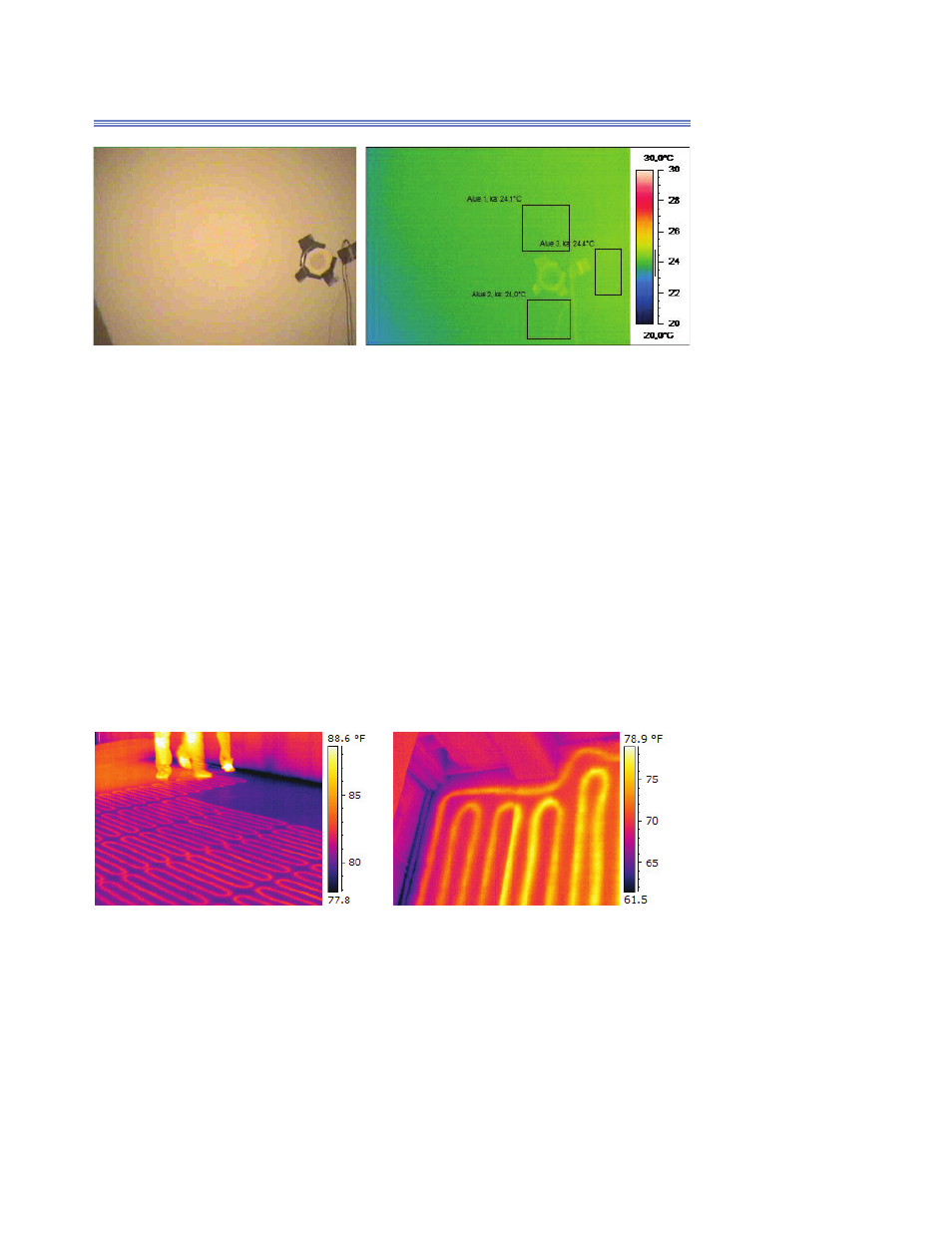G.12 other applications and supporting methods – Retrotec USACE User Manual
Page 355

Appendix G G25
G.12 Other Applications and Supporting Methods
Figure G25. Heat fl ux meter installed on a wall and the corresponding IR thermogram. (Images
from original paper presented to BCRA.)
Thermal scanning can be also used in determining U-values, in addition
to standard measurements performed with heat fl ux meters (Figure G25).
Thermography results enable placing a heat fl ux meter in an appropriate
place where the through-the-wall heat fl ux is essentially one-dimensional—
i.e., not disturbed by three-dimensional elements: columns, inserts, and so
on. The results of heat fl ux measurements and thermal imaging can be com-
bined to fi nd an average U-value or a local heat transfer coeffi cient. The
technique described above is typically quite long because of the necessity
to average heat fl ux values during several days in order to choose a period
where thermal conditions are stationary. Thermal imaging can, with certain
restrictions, can be used to examine the performance of heating systems. It
allows quick evaluating of both the average and inlet/outlet temperatures of
radiators, as well as detecting possible blockages in water circulation–based
systems.
Figure G26. IR thermogram of an electric and hydronic radiant fl oor system. (Images from
BCRA.)
Locating fl oor heating pipelines and electrical conductors and fi nding leaks
and blockages can be also accomplished by this technique (see Figures G26
and G27). IR thermography evaluates the condition of motors or electrical
